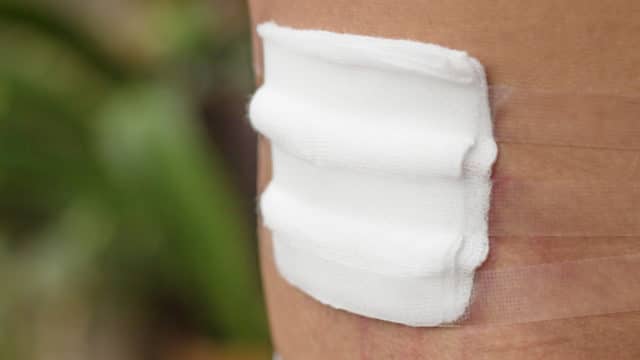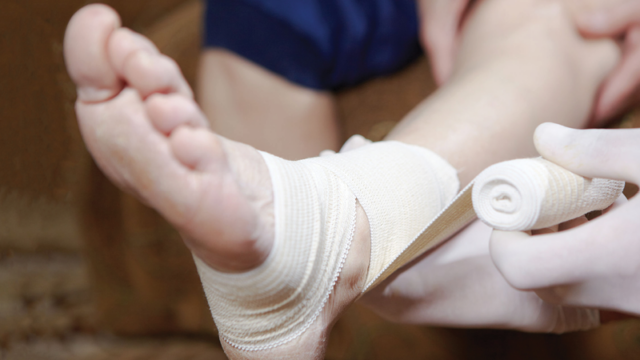Exploring the Different Types of Chronic Wounds: From Diabetic Ulcers to Pressure Sores
Understanding Chronic Wounds: Definition and General Characteristics
A chronic wound is one that doesn’t progress through the normal healing stages. While most wounds follow a predictable healing pattern, certain factors can disrupt this process, leading to chronic, non-healing wounds.
A chronic wound occurs when one or more phases of healing become impaired. Common barriers include:
- Poor circulation limiting oxygen and nutrient delivery
- Uncontrolled blood sugar interfering with tissue repair
- Persistent inflammation preventing progression to healing
- Compromised immune system slowing the repair process
We see chronic wounds most often in patients with underlying health conditions like diabetes, vascular disease, or compromised immune systems. Age also plays a significant role, as healing typically slows as we get older. Understanding these factors helps us develop targeted treatment approaches for each patient’s unique situation.
When a wound becomes chronic, it requires specialized care to restart the healing process. Early intervention is essential – the longer a wound remains stalled in the healing process, the higher the risk of complications like infection or tissue loss.
Common Types of Diabetic Wounds
Among diabetic wounds, foot ulcers pose the greatest concern. These wounds typically develop on pressure points – the balls of the feet, heels, or toes – where repeated friction or pressure occurs during walking. Diabetes creates a perfect storm of conditions that can lead to chronic wounds:
Neuropathy (nerve damage) plays a crucial role by:
- Reducing sensation, making injuries easy to miss
- Altering foot structure, creating new pressure points
- Decreasing awareness of temperature and pain
Poor circulation compounds these problems by:
- Limiting oxygen and nutrients to tissues
- Slowing the healing process
- Increasing infection risk
Early detection of diabetic wounds is vital but challenging since many patients can’t feel the initial injury. Regular foot inspections and prompt professional care are essential for preventing serious complications like infection or amputation.
Diabetic Foot Ulcers
A diabetic foot ulcer is a wound that occurs on the feet, heels or toes of people living with diabetes. Many times, there is little to no feeling in their feet or the wound itself due to diabetes-related nerve damage. If left untreated, the ulcer grows larger and deeper due to decreased circulation from blood vessel damage. This can lead to infection, hospitalization and amputation.
- Typically occurs on the feet, heel, or toes
- Often, there is little to the ulcer itself
- Skin on the legs and feet may be dry and flaky
Arterial or Ischemic Ulcers
Arterial or ischemic ulcers occur when the affected area does not receive blood supply. The medical term for poor blood flow is ischemia, therefore these wounds are also called ischemic ulcers. They are most often found on the toes, feet, heels or ankles.
- Leg pain may worsen when the leg is elevated
- Shiny or tight, hairless skin
- Skin that is cool or cold to the touch
- Minimum drainage from the wound
- A round wound with even edges or the look of being punched out
Arterial ulcers require prompt treatment to improve blood flow and prevent further tissue damage.
Venous or Stasis Ulcers
Venous ulcers occur when blood pools up in the veins due to valves that are not working properly to push the blood back up to the heart. The medical term for poor circulation is stasis, therefore these wounds are also called venous stasis ulcers. They are most often found just above the ankle.
- Leg pain or achiness
- Swelling in the leg, especially at the end of the day
- Discolored skin in the area above the ankle
- Moderate to heavy drainage from the wound
Compression therapy and wound care are essential for treating venous ulcers and preventing recurrence.
Pressure Ulcers
Patients most at risk for pressure ulcers include people with limited mobility due to illness, injury or paralysis. Other risk factors include people living with obesity, poor nutrition and urinary and/or bowel incontinence.
- Most commonly found over a bony prominence
- Ulcers begin as pressure injuries with non-blanchable redness
- If untreated, subcutaneous fat becomes visible
- Continued tissue loss leads to exposed muscle, tendon or bone
Regular repositioning and pressure-relieving devices can help prevent pressure ulcers from developing or worsening.
Traumatic Condition Ulcers
Severe trauma or conditions can lead to hard-to-heal wounds due to significant tissue loss as well as organ damage, leading to poor circulation. Car accidents are a leading cause of chronic wounds caused by traumatic conditions. Surgical incisions can also lead to a hard-to-heal wound if post-operative wound care fails. Signs of distress may include:
- Redness around the injury or incision
- Pain of throbbing
- Discharge with an odor or pus
- Fever
Close monitoring and specialized wound care are necessary to promote healing and prevent complications in traumatic condition ulcers.
Radiation-Related Wounds
Some cancer survivors face another health challenge: a soft tissue condition or chronic wound caused by their cancer treatment. Radiation kills cancer cells but can also harm healthy tissues. This damage can worsen over time and symptoms may not occur for months or even years after treatment ends. Managing radiation-related wounds requires a multidisciplinary approach, including wound care specialists and oncologists, to address the unique challenges faced by cancer survivors.
Inflammatory and Infectious Wounds
Inflammatory and infectious wounds develop when the body’s normal healing process is disrupted by persistent inflammation or bacterial colonization. These wounds can enter a cycle where inflammation prevents healing, creating an environment where bacteria thrive.
Biofilms – communities of bacteria that form a protective shield – play a significant role in chronic wounds. These microscopic barriers:
- Protect bacteria from antibiotics
- Maintain persistent inflammation
- Interfere with normal tissue repair
- Make wounds resistant to standard treatments
Professional wound care often involves removing biofilms and managing inflammation through specialized cleaning techniques, antimicrobial dressings, and targeted therapies. Without addressing both the inflammatory response and bacterial presence, these wounds struggle to progress through normal healing stages.
Pyoderma Gangrenosum
Pyoderma gangrenosum is a rare but serious inflammatory condition where painful ulcers develop rapidly, often following minor injury or surgery. The wounds typically start as small pustules that break down into deep ulcers with distinctive, purple-colored borders.
This condition is often associated with underlying autoimmune disorders, inflammatory bowel disease, or blood disorders. Treatment focuses on:
- Controlling inflammation through medications
- Protecting the wound from further trauma
- Managing pain and preventing infection
- Addressing any underlying health conditions
Early recognition and specialized treatment are essential, as these wounds can expand quickly and are often mistaken for other conditions. Working with a team of specialists helps ensure proper diagnosis and targeted therapy.
Prevention and Risk Assessment Tools
Regular assessment helps identify and address wound risk factors before complications develop. Here are some key areas to monitor and assess:
Key Assessment Areas
- Skin condition and color changes
- Blood flow and circulation status
- Movement and mobility limitations
- Nutritional health
- Previous wound history
Standard Risk Assessment Tools
- Braden Scale identifies pressure injury risk
- Wagner Scale evaluates diabetic foot risks
- Norton Scale assesses general wound risk
Prevention Strategies
- Use pressure-relieving cushions and mattresses
- Wear properly fitted, protective footwear
- Implement regular skin inspection routines
- Maintain good nutrition and hydration
- Address underlying health conditions
Regular monitoring and early intervention can significantly reduce the risk of wound development. Work with your healthcare providers to determine appropriate prevention strategies for individual risk factors.
Taking Action: When to Seek Professional Care for Chronic Wounds
Chronic wounds require immediate attention when they exhibit critical warning signs: persistent redness, warmth, or swelling; increased pain; pus discharge; fever; lack of healing after 2-3 weeks; increasing wound size; visible dead tissue; or significant bleeding.
Professional treatment typically involves advanced wound cleaning, debridement of dead tissue, specialized dressing techniques, and targeted medication. If your wound shows any warning signs, take immediate action by scheduling an appointment with your healthcare provider or a wound care specialist. Early intervention is vital to promote continued healing and prevent serious complications, potential infections, and long-term health issues. Your wound’s healing is a critical aspect of your overall health that requires prompt and comprehensive professional care.
Please click here to find a Healogics Wound Care Center near you.



